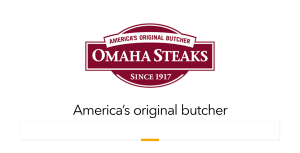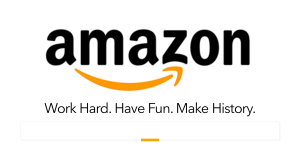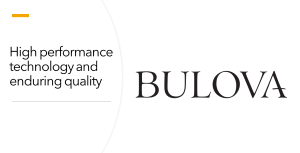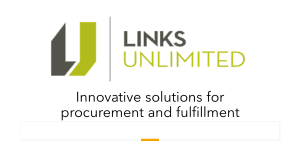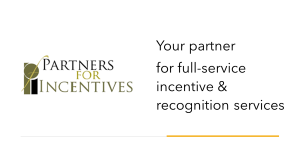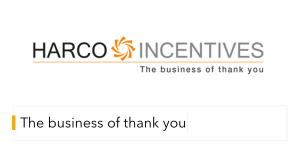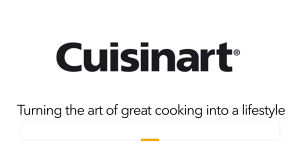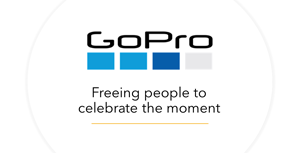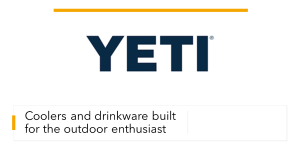Distributor Vet Sees Big Potential for Brands in Promotional Products and Gifts
While brands have focused for decades on selling their products through distributors for use in incentive, promotion and recognition program, an industry veteran believes there may be much bigger opportunities for brands as promotional products, business and event gifts, which together represent 44% of the promotional products business, according to PPAI’s 2017 report.
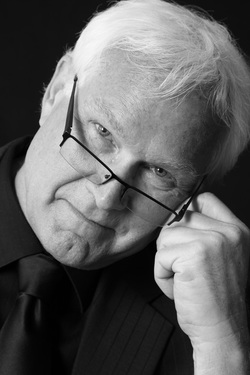 Almost 30 years ago, Paul Kiewiet’s BrandKiwi was one of the first distributors to bring incentive, promotion and recognition programs to his clients and to the industry. Active in Promotional Products Association International (PPAI) and eventually serving as Chairman, Kiewiet continues to write about and conduct presentations on how to sell and run incentive, promotion and recognition programs for the distributor marketplace.
Almost 30 years ago, Paul Kiewiet’s BrandKiwi was one of the first distributors to bring incentive, promotion and recognition programs to his clients and to the industry. Active in Promotional Products Association International (PPAI) and eventually serving as Chairman, Kiewiet continues to write about and conduct presentations on how to sell and run incentive, promotion and recognition programs for the distributor marketplace.
RRN recently caught up with Kiewiet to get his perspective on the Enterprise Engagement Alliance’s new Brand Experience Coalition, designed to promote the sale of brands for promotional products, business and event gifts, as well as rewards and recognition. As Executive Director of the Michigan Promotional Products Association (MiPPA), he says the group’s trade shows feature several master fulfillment companies that focus on providing brands to the promotional products marketplace.
Kiewiet believes there’s a significant opportunity for brands, not only in safety, recognition and incentive programs where they have traditionally focused their attention, but in the much larger event and business gift marketplace. “There are perhaps more opportunities for brands in imprinted products and event gifts than in the incentive and recognition market when it comes to distributors,” he says.
Brands Add Cachet
“So many people have this false notion that the promotional products business is only about low-cost items. One of the biggest questions people have right now in the business is how to get their hands on a Yeti water bottle for imprinting,” Kiewiet says with a laugh, “and their clients are now putting their logos on $700 Otterbox coolers. There are low-priced alternatives for these products by the hundreds, and yet look at the demand. Distributors pride themselves on being able to get anything, and all the engravers and imprinters would like to do more imprinting or engraving on brands. Brands add cachet, and having brand name gift and reward options on their websites elevates a distributors’ capabilities to match product to people and programs.”
While some distributors have done well selling incentives and recognition, he explains, “It requires a much different mindset, business model and expertise that I doubt will ever make sense for most distributors. They’re not used to the high level of consultative selling and time involved with just making a sale in an incentive, recognition, or loyalty program, let alone implementing the program and then waiting the long time required to actually get redemptions. And the game is only going to get tougher as more companies recognize the science. The incentive and recognition business makes the most sense for distributors comfortable with working as agencies, and that’s only a certain percentage. The concept of the Brand Experience Coalition fits right into what all distributors aim to do: find the right product to tell their clients’ story in the right way, and almost everyone recognizes that brands help tell those stories better.”
Kiewiet suggests that brands may have previously approached the promotional products market the wrong way. “The incentive industry was focusing on selling brands for use in incentive, recognition, and safety programs through the distributor channel, and for some reason overlooked the logical role that brands can play in promotional product, business and event programs. Oddly, I don’t think I can recall any serious education programs on using brands as promotional products and business and event gifts.”
He thinks this emphasis on selling brands into the promotional products business through incentive and recognition programs actually could be hurting the cause of the Brand Experience Coalition. “So many distributors have it burned into their minds that brands equate with incentive and recognition programs that they overlook how brands can help them enhance their current business.”
Carefully Selected Brands Can Tell a Story
Kiewiet believes that brands can potentially play a much greater role in promotional products and business and event gifts “because there simply is no doubt that brand names have a higher perceived value than non-branded items, and that carefully selected brands tell can story about your own brand. There’s a real need for information on the personality of leading brands, as that would help distributors bring to their clients unique ways they can enhance their own brands through affiliation with others in the promotional products and gift process, as well as rewards and recognition. Combine the brand name with creative engraving or screen- printing, packaging, and presentation, and one can make a compelling case for paying more for the added benefits of a brand name.”
That said, Kiewiet doesn’t suggest that brands would ever dominate a marketplace often based on items priced under $1. He believes that brands and gift cards must overcome several hurdles to significantly increase their use as promotion products for events and business gifts, but believes everything is in place for that to happen, starting with customer demand. The biggest issue for distributors to overcome, he says, is the issue of margins, but notes that “when clients demand brand-name products, distributors find a way to make money.”
When brands are involved, he explains, the order sizes or dollars are much bigger, “so even if the margin is lower, the net result can be similar, and there’s no issue about waiting a long time for redemptions like there is in the incentive, recognition and loyalty business.” In addition, he says, “there’s almost always an opportunity for an additional margin in the customization and personalization of the experience, the careful selection of brands or product and logistics involved, and the communications and social networking that might go along with it.”
Another consideration, he points out, is that distributors often can buy brands directly from the master fulfillment companies that specialize in those brands and thereby, under most contracts, do not have to pay the often significant buying group percentages.
How Master Fulfillment Companies Can Help
Kiewiet suggests that the master fulfillment companies specializing in brands should develop ways, if they haven’t already, to help distributors address the challenging credit issues many face in larger order purchases in a way that ensures the distributor is protected. “This business has always been about trust, and there are many companies that make it work in terms of direct billing or other creative credit options with reputable clients.”
The role of brands in the promotional products business, Kiewiet notes, has grown so significant that leading brands have already created semi-exclusive agreements with master fulfillment companies (or what Kiewiet calls master distributors) to ensure that their brands are only appearing alongside companies or in industries they feel comfortable with. “When it comes to using brands in promotional products and gifts, it’s a two-way street: distributors must understand the ‘personality’ of their brands to find the right fit but also ensure they’re buying from a reputable source who will make sure that some leading brand doesn’t come after the client with a lawsuit.”
Is there anything that could stop distributors from using more brands in their traditional business? “I think it still comes down to the big differences between the two cultures,” Kiewiet concludes. “A lot of it is price and profit. Distributors want to sell on 50% or 40% built-in margin. That margin issue is what has traditionally scared them away. But now most of them are dealing with large buying groups with whom they have to share a lot right off the top and are facing significant pricing pressure from the Internet. I think that if the master fulfillment companies that specialize in brands can get help with the credit side of customizing and personalizing well-known brands and gift cards, distributors can bring a lot to the table for their customers and their own businesses.”
About Paul Kieweit
Kiewiet is Executive Director of the Michigan Promotional Professionals Association and was
Chairman of Promotional Products Association International in 2007. He is a consultant and public speaker specializing in people performance management; professional and leadership development; and almost any topic having to do with the promotional products business.
Contact Information
312-583-9616
Master the Principles of Enterprise Engagement and ISO 9001 and ISO 10018 Quality People Management and 9 New Human Resources Standards
Discover a new internationally sanctioned approach to create new wealthyou’re your organization by achieving greater return-on-investment on your organization’s budgets for culture, leadership, communications, training, rewards & recognition and more.
In Print: Enterprise Engagement: The Roadmap 4th Edition, How to Achieve Organizational Results Through People and Quality for ISO 10018 Certification.
The first and most comprehensive book on Enterprise Engagement and the new ISO 9001 and ISO 10018 quality people management standards.
Online: The Enterprise Engagement Academy at EEA.tmlu.org, providing the only formal training on Enterprise Engagement and the new ISO 9001 and ISO 10018 quality people management standards. Provides preparation for professionals to support organizations seeking ISO 10018 employer or solution provider certification, as well as elective courses on Trade Show Engagement, Rewards and Recognition, Government, and other topics.
Plus: 10-minute short course: click here for a 10-minute introduction to Enterprise Engagement and ISO standards on Coggno.com.
Services: The International Center for Enterprise Engagement at TheICEE.org, offering: ISO 10018 certification for employers, solution providers, and Enterprise Engagement technology platforms; Human Resources and Human Capital audits for organizations seeking to benchmark their practices and related Advisory services for the hospitality field.
The Engagement Agency at EngagementAgency.net, offering: complete support services for employers, solution providers, and technology firms seeking to profit from formal engagement practices for themselves or their clients, including Brand and Capability audits for solution providers to make sure their products and services are up to date.
Enterprise Engagement Benchmark Tools: The Enterprise Engagement Alliance offers three tools to help organizations profit from Engagement. Click here to access the tools.
• ROI of Engagement Calculator. Use this tool to determine the potential return-on-investment of an engagement strategy.
• EE Benchmark Indicator. Confidentially benchmark your organization’s Enterprise Engagement practices against organizations and best practices.
• Compare Your Company’s Level of Engagement. Quickly compare your organization’s level of engagement to those of others based on the same criteria as the EEA’s Engaged Company Stock Index.
• Gauge Your Personal Level of Engagement. This survey, donated by Horsepower, enables individuals to gauge their own personal levels of engagement.
For more information, contact Bruce Bolger at Bolger@TheEEA.org, 914-591-7600, ext. 230.










